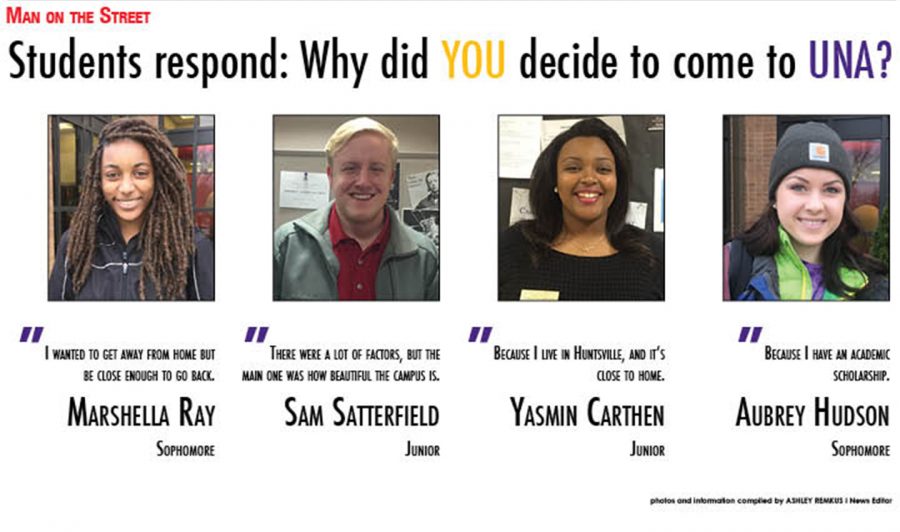Study shows students choosing community college over UNA
January 15, 2015
After five years of declining enrollment, university officials set out to discover why 893 admitted students chose not to attend UNA.
A telephone survey conducted by the Office of Institutional Research indicates UNA’s biggest competition for students is community colleges.
Director of Institutional Research Andrew Luna said he and his team contacted 646 students with a 37 percent response rate.
“It’s not as strong as we would like, but it’s about as strong as you can get on that type of a population where they have no vested interest,” Luna said. “A lot of the phone numbers were nonworking.”
The survey indicates 43 percent of the respondents opted to attend community college, with a large portion choosing Northwest-Shoals, Calhoun or Bevill State.
Luna said many students who chose to attend a community college named cost as a determining factor, as 25 percent of respondents — 85 percent of whom enrolled at a community college — said cost deterred them from attending UNA.
Shoals Scholar Dollars, a program run by the Florence and Sheffield Rotary clubs to help young adults continue their education after high school, was cited as a driving force for many students to attend Northwest-Shoals.
Of the 34 students who said they enrolled at Northwest-Shoals, 44 percent indicated they received Scholar Dollars assistance.
“We clearly showed Shoals Scholar Dollars had some affect,” Luna said. “If you can get the first two years of your college absolutely free, that’s free money. And you can’t fault anybody for doing that.”
Students who attended community colleges said they saw no reason to attend UNA when they could get the first two years of their degrees completed for less expense, according to the study.
“Higher education costs a lot of money any way you look at it,” Luna said. “Students are being careful in how they’re selecting colleges.”
The survey reports 32 percent of respondents said they did not receive a scholarship from UNA or the scholarship offer was not sufficient.
In an earlier interview, Director of Admissions Kim Mauldin said the university hoped a new scholarship initiative would increase enrollment.
However, the study indicates Vanguard Scholarships were not as effective as officials had anticipated.
Mauldin said she attributes the low effectiveness to the late introduction of the scholarships.
“Students and their parents often begin really looking at colleges the summer after their junior year,” Mauldin said. “We didn’t get the scholarships marketed to students early enough this first year.”
She said some students had likely committed to attending another college or university before they were notified they were eligible for a Vanguard Scholarship.
Vanguard scholarships are meant to reach students who achieved an average ACT score but excelled in their core classes, Maudlin said in an earlier interview.
Luna and Mauldin said they expect the scholarships will have a greater positive effect on enrollment in the coming years.
Of the remaining accepted students — those who chose not to attend UNA or a two-year college — 25 percent said they attended a master’s/comprehensive university such as Jacksonville State University, Troy University or the University of Montevallo.
Master’s/comprehensive universities, like UNA, lack doctoral programs but offer bachelor’s and master’s degrees.
The remaining 32 percent attended doctoral-granting research institutions or schools offering baccalaureate degrees, according to the study.
Luna said students seemed to see UNA as a lower-value option.
The survey concludes, “UNA should strengthen its branding and messaging by focusing on the unique benefits it offers to students who enroll at its institution.”
Luna said those benefits include 80 percent of courses at UNA being taught by full-time faculty.
“That’s something where we can compete with the private universities,” he said. “We just have to show these students what we offer here at UNA.”


